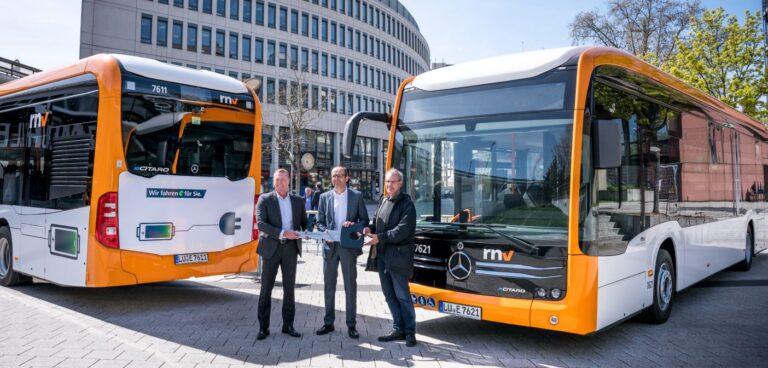Rhein-Neckar-Verkehr (RNV) has ordered 15 eCitaro buses for use in Ludwigshafen’s urban traffic, with a further 15 eCitaro buses scheduled to go into service in the cities of Mannheim and Heidelberg in May and June.
As part of a wider three-year e-bus project, RNV has purchased the solid-state battery powered buses from Mercedes‑Benz, which are designed for both durability and performance.
The new buses feature high energy density, about one fourth higher than classic lithium-ion batteries with liquid electrolyte. This battery technology is also free of the chemical element cobalt. The new battery technology, each with an energy content of 441kWh, is available for both the articulated bus and the solo bus.
Depending on the battery equipment, the eCitaro solo bus can travel up to 320km without recharging under average requirements in terms of speed, topography, load and given basic climatic conditions. Another advantage of solid-state batteries is their durability, RNV said.
“We have been investing a great deal in the electrification of our bus fleet for years. In our view, this is an investment in the future,” said Christian Volz, commercial director of RNV
“The acquisition costs for the 15 buses and their charging infrastructure is money well invested. It will pay off throughout the service life of the buses: With fuel prices as they are at the moment, the energy costs per kilometre for a diesel bus are around 60 cents, whereas for an electric bus only around 26 cents. It is expected that this divergence will be even greater in future.”
The collaboration added the heating and air conditioning system in the eCitaro is also interesting, as it is based on a CO2 heat pump. Connected to the water circuit of the units, energy consumption is lower compared with electrically- operated side wall heaters with blowers. The range of these vehicles also increases in winter operation.
Furthermore, the RNV vehicles feature a reversing camera with Sideguard Assist, which assists drivers when turning, and Preventive Brake Assist. Passengers have double USB charging sockets and can track the route, arrival times and media information on a 29-inch monitor.





